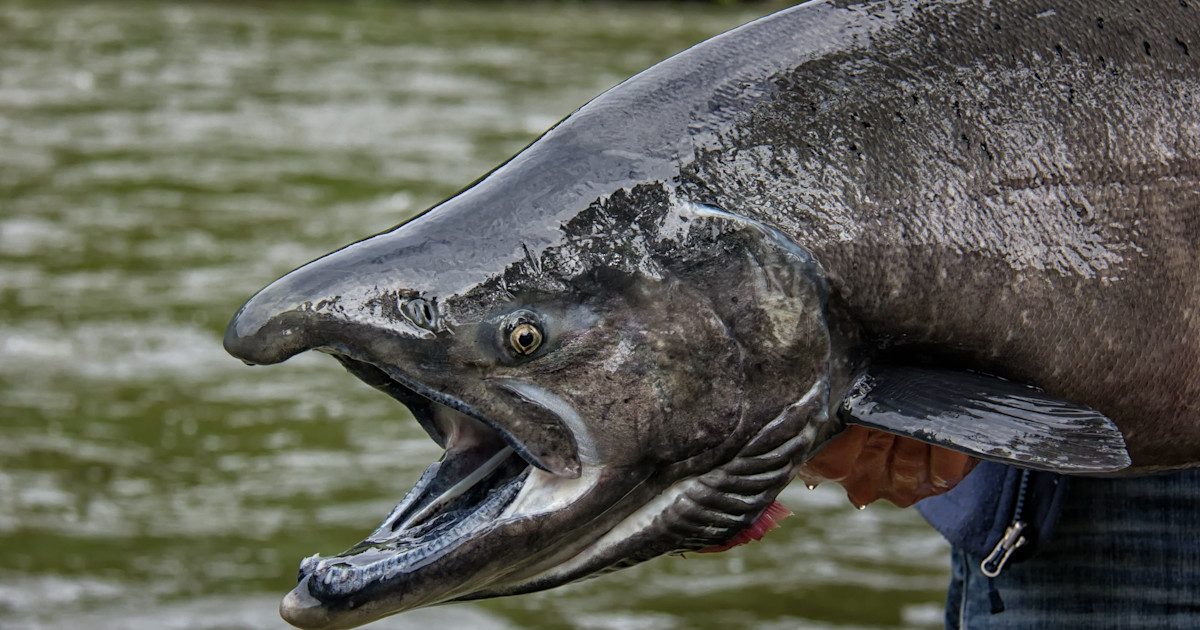No one ever dreams small. From childhood, we fantasize about becoming astronauts, movie stars, or the president, and imagine owning flashy cars and elaborate mansions. As we get older and our goals become more realistic, but this internal desire for grandeur rarely diminishes. From getting our next promotion at work, to harvesting our next trophy animal, we all want the best and biggest and the best for ourselves in all that we do and that includes fishing.
Every single angler out there at least toys with the idea of catching the big one. That fish that will push out tackle to the limit and stand out as a testament to our skill is always fluttering like a ghost at the back of our mind. And while our big fish ambitions can come in many forms—from giant trout and bass, to pike, or even crappie—there are certain species out there that stand out above the rest. Five of these monster fish species exist right here in the lakes and rivers of North America, and when you hook into one, it all but guarantees that all your big fish dreams are about to come true.
White Sturgeon
Without a doubt, the absolute peak of the big fish mountain is the white sturgeon. With a maximum length of 20 feet and weights that can tip the scale at more than 1,200 pounds, white sturgeon achieve sizes that are head and shoulders above every other fish on the continent. As an isolated species, white sturgeon can be hard to find with their range limited to West Coast states like Oregon, Washington, and California, and the Canadian province of British Columbia, where angling for them is limited to only a few select waterways. But when you have the opportunity to tangle with one, you can truly experience what it’s like to fight a dinosaur.
“The fight is just another challenge of these fish,” says Brandon Wootton, owner and head guide of Mainlanders Sportfishing in Chilliwack, British Columbia. “They pull like a truck, jump like a tarpon, and use the river’s current to their advantage. With their line peeling runs and acrobatics, these fish can just become etched in your mind forever.”
Fishing for white sturgeon can be tricky, as it requires extremely heavy equipment and specialized techniques for success.
“Most of us fish by jet boat, which is best way to navigate the Fraser River; we are also equipped with the latest in technology,” Wootton told MeatEater. “Side image fish finders help the process by ensuring that every time you drop your anchor, you have fish behind your boat. Large weights, stout one-piece heavy-action rods, strung with 200-pound braided line with a stout circle hook, are all essential. And of course, you are only as good as your bait! Bait is very important.”
White sturgeon eat a variety of different things, from insect nymphs and fish eggs, to shellfish, lampreys, herring, and even salmon. Pretty much anything that swims, floats, or hangs out on the bottom of the river can be a part of a sturgeon’s menu, but most anglers find success with either large chunks of fresh-cut bait or even whole dead baits that have been left to rest on the bottom.
While it may seem simple, there are many challenges to white sturgeon fishing that go well beyond battling and landing a massive prehistoric fish and involve preserving the species to ensure its survival.
“White sturgeon are a challenge for any big game fisher,” Wootton said. “They are a beautiful fish that have been around since the dinosaurs and are an absolute must-do for any big game angler because the more we target them, the more we can help the species. Here on the Fraser River, we scan each fish for conservation purposes, making every fish we land a part of the research that will help preserve these great fish for generations to come.”
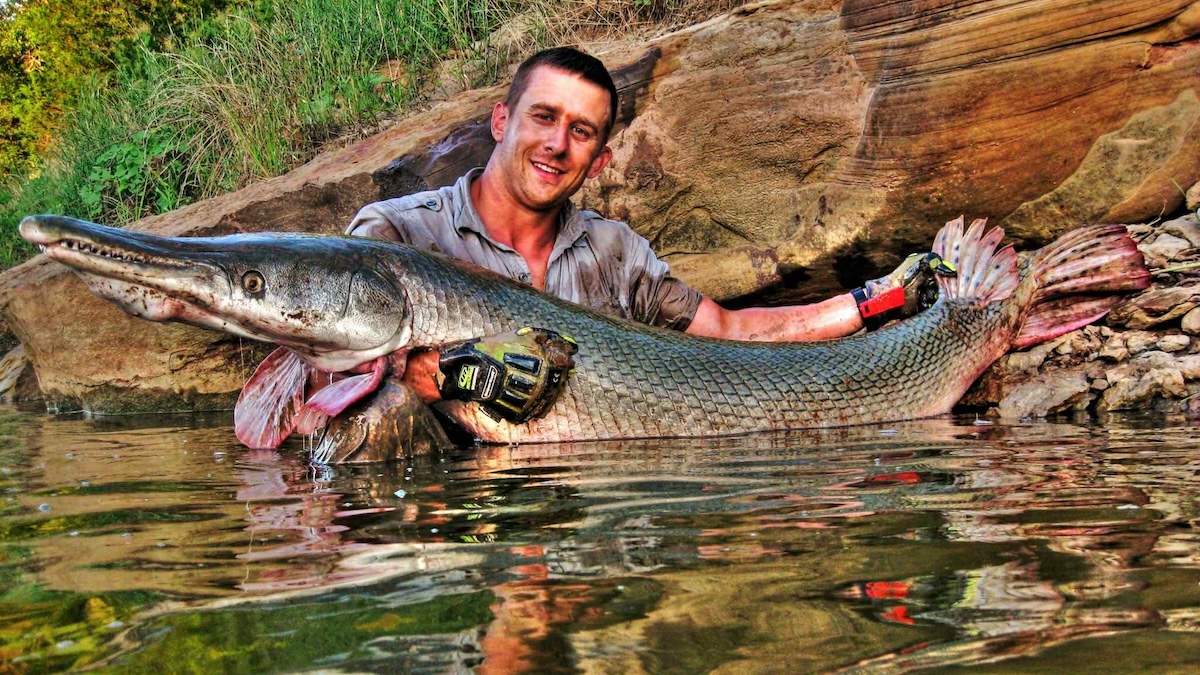
Alligator Gar
No other freshwater fish in North America has achieved the same mystique as the alligator gar. These monstrous, snaggle-toothed fish are gigantic, growing up to 10 feet and weighing more than 300 pounds, and with all that size comes a bad ass reputation. Tales of alligator gar devouring pets, small children, and even adult anglers who fall into the water are freely told around bait shops and campfires, while few of these tales are actually true, there’s a reason these prehistoric predators are held in such high regard.
“I’ve had the opportunity to chase some of the world’s largest freshwater fish… arapaima, piraiba, wels catfish, etc., but there’s just nothing like an alligator gar,” says David Graham, host and author of the Boundless Pursuit podcast and blog. “In terms of North America’s true freshwater fish, the alligator gar is our heavyweight champion. It is among the world’s rare and quickly diminishing freshwater megafauna. To fish for, capture, and physically touch a large alligator gar is a unique experience that no other fish can really duplicate.”
Alligator gar fishing is similar to pursuing actual alligators, the monstrous crocodilians whose similar appearance gives the fish its name. The fish have to be caught on heavy tackle, with extra strong hooks and braided 100-pound-plus test line, in specific areas of the river. And to catch them, you have to make sure you’re baiting up with their favorite food—meat.
“I like to use chunks of carp, buffalo, drum, mullet, and large gizzard shad as gar bait,” Graham said. “Usually, the best bait is what you can pull right from the water you’re fishing. Alligator gar are very scent-oriented, so I like to descale the bait and tenderize it a bit, but leave the flesh on. This allows the oils and scent of the bait to release more and makes the bait softer so the gar spends less time chewing it.”
Pursuing alligator gar can be tricky as they’re only native to a few rivers and lakes in the southern US. Stable and healthy populations of the big fish are found in Louisiana, Mississippi, Texas, and Florida, though specimens have been caught as far north as Ohio and as far south as Veracruz, Mexico. However, what they lack in population, they more than make up for in strength and power, with the heavy and powerful predators pushing the anglers who hook them to the very limit.
“There is a unique set of challenges that gar represent that should excite anglers keen on challenging themselves,” Graham told MeatEater. “When we look at the typical setup of tackle that is used to catch the vast majority of fish species in the US, most of them weren’t designed anatomically for a fish structured like a gar—the long, cylindrical body of armored scales, the sheer enormous size of the fish, and the structure of their jaws made almost entirely of solid bone and lined with two rows of large conical teeth.”
The ancient anatomy of alligator gar presents a massive challenge to anglers. But one that is most certainly worthwhile to pursue.
“I think the real measure of an angler is his versatility and resolve. Anglers should look at something like an alligator gar and see the clear and undeniable challenge this species represents as a fish to be caught on rod and line,” Graham said. “They present an opportunity to pursue an animal that swam in our waters during a time in which creatures we can scarcely imagine swam alongside them. Alligator gar are North America’s freshwater super fish.”
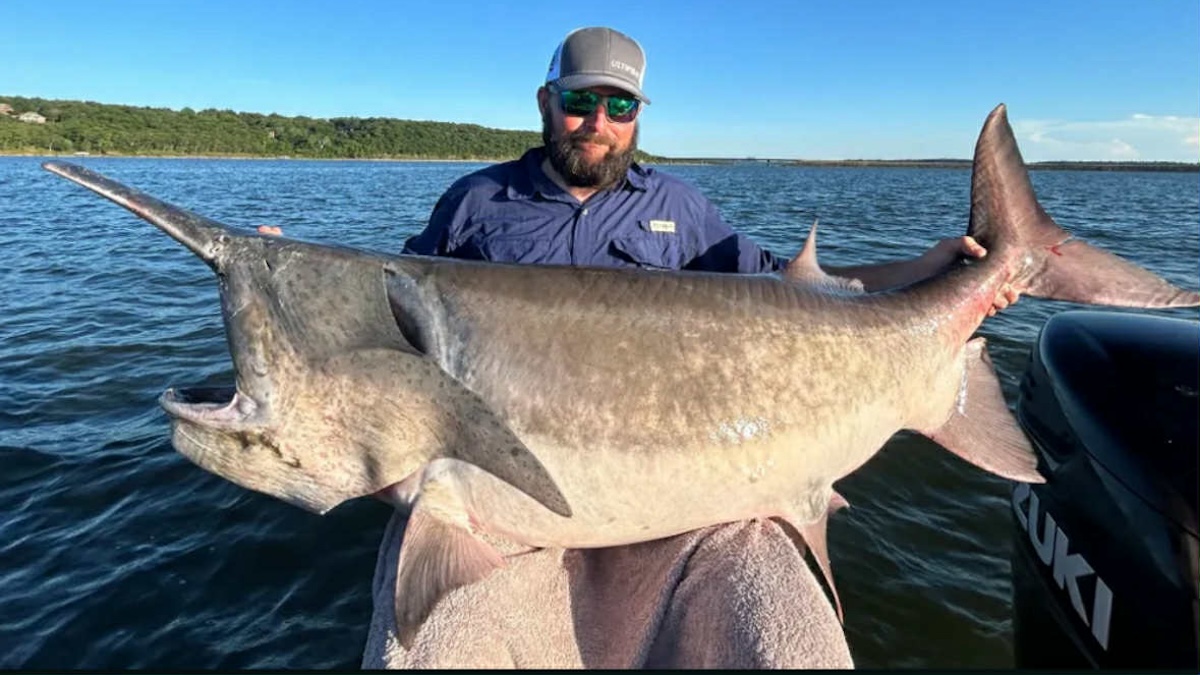
Paddlefish
Out of all the large, misunderstood fish species in North America, there are few larger or more misunderstood than the paddlefish. With a heavy, shark-like body topped with a long rostrum or “paddle” which they use to detect prey, paddlefish were once thought to be monsters. It’s little wonder as the giant fish can grow to more than seven feet, weigh upwards of 150 pounds, and look like something out of an Alien movie. However, these fish are gentle giants that filter feed on micro-invertebrates and plankton, making them a unique and powerful challenge for anglers.
“One of the coolest things about catching paddlefish is that you have to snag them,” says Ryan Davidson, owner of Oklahoma Paddlefish Guide Service. “So that sets them apart from any other type of fishing because traditionally, it’s all luck. Back in the day, it used to be like deer hunting where you’d find a bottleneck in the river and stake it out. Now that we have LiveScope, however, I wouldn’t say it’s easier, but if you spend a couple thousand hours chasing them, you can be more successful.”
Snagging paddlefish is a practice done everywhere there is a high enough population of the fish for harvest. This includes states like Arkansas, Illinois, Indiana, Iowa, Kansas, Kentucky, Mississippi, Missouri, Montana, Nebraska, North Dakota, Oklahoma, South Dakota, and Tennessee. However, each state has its own unique set of rules and regulations about equipment and practices that make snagging the fish as challenging and rewarding as catching other species on bait.
“For the average guy, go below a dam when they’re running water in the spring and throw as far as you can and start jerkin,” Davidson told MeatEater. “It can take hours or even days to hook up. We use 100% LiveScope. Now, some say it’s cheating, but fish move, the boat moves, and current, depth, and speed are constantly changing while you’re trying to run a trolling motor, read the graph, and cast accurately. It’s like rubbing your belly and patting your head and driving a boat with your feet.”
Paddlefish have an additional reward that goes beyond just having to fight and land such monstrous fish, as they are among the best-eating fish in freshwater.
“Paddlefish fishing is a challenge, and a rush, and it will definitely fill the freezer,” Davidson said. “Paddlefish fight like a tank, but man, they’re great table fare! The meat and caviar are just delicious! In Oklahoma, they are abundant and older than dinosaurs. They’re just the biggest and coolest-looking fish in the lake, and they’re hearty and don’t give up. You don’t get older than dinosaurs by dying easily. We do our best to conserve the resource we have and teach others to do the same.”
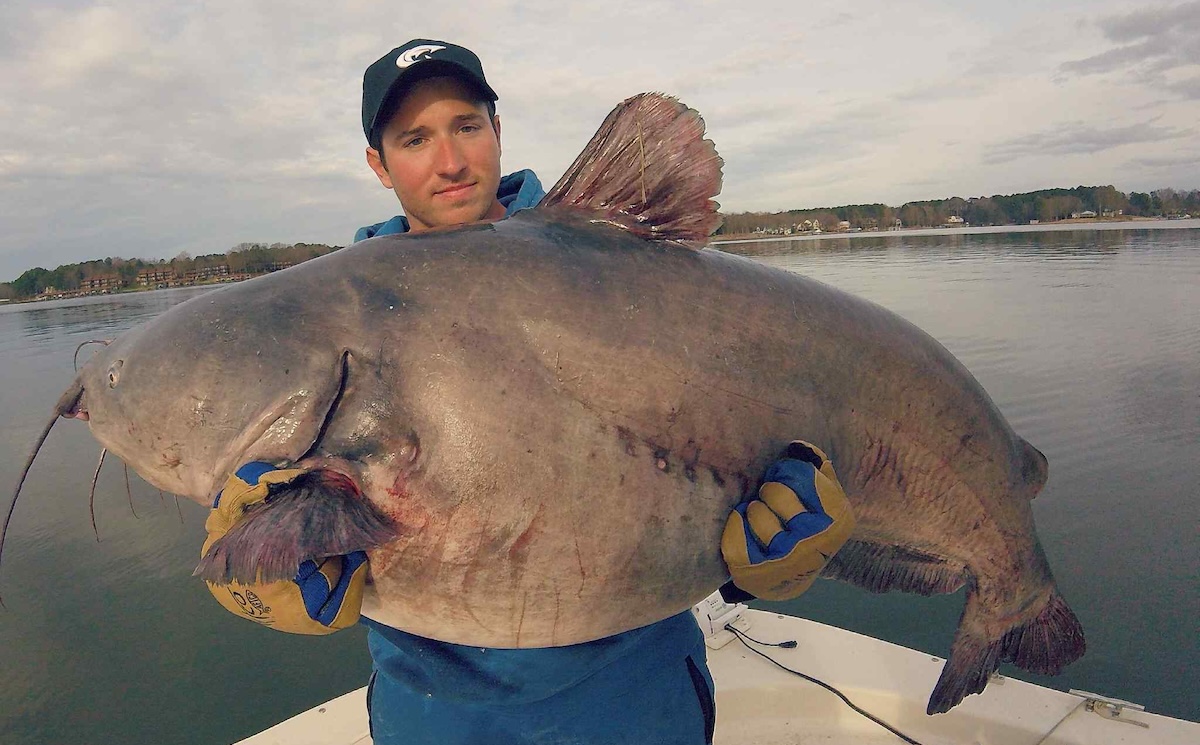
Blue Catfish
Catfish come in many sizes, shapes, and colors. From the beastly flathead to the diminutive bullhead, every one of them is worth pursuing, but no other catfish species hits that “oh my God, I’ve got a big one” button in your brain quite like a blue cat.
These hardy and widespread whisker warriors can be found throughout the central and southern US, where they can grow to more than five feet long and weigh over 100 pounds. When you combine this large size with an abnormal amount of strength and power with mysterious and inconsistent habits, blue cats become a unique and special challenge for catfish-loving anglers everywhere they’re pursued.
“For me, the most challenging thing about targeting blue catfish is how much they tend to roam,” says Zakk Royce, owner of Blues Brothers Guide Service in Henrico, North Carolina. “They will often be out in open water and sometimes will even suspend far off the bottom in deeper water, which can be a whole other challenge in the world of catfish fishing. Locating blue cats and figuring out their seasonal patterns is definitely the toughest part of fishing for them.”
Unlike other catfish species which tend to be bottom feeders and roam the darkness and mud of river and lake bottoms to feed on whatever they find, blue cats generally feed up towards the surface. They’re more interested in live bait than other catfish species and are often caught on fast-moving lures and even flies.
“Generally, for me, trolling and drifting with planer boards covering as much water as possible has been the most productive technique,” Royce told MeatEater. “But they can be caught in a lot of different ways. It really depends on what type of body of water you’re fishing.”
You can catch blue cats on rod and reel, limb lines, trot lines, or even by jugging. Yet, whatever equipment or method you choose to use to pursue them, the results are the same: you’ll have a hard fight with a monstrous and very angry fish.
“Blue Catfish grow to enormous sizes, over 100 pounds, which obviously gives an angler a chance to catch a fish of a lifetime,” Royce said. “But the best thing about them, at least for me, is the fact that every time I go fishing for blue cats, I don’t know if my next bite will be 10 pounds or 100 pounds. No matter their size, tangling with a blue cat always makes for a great fight!”
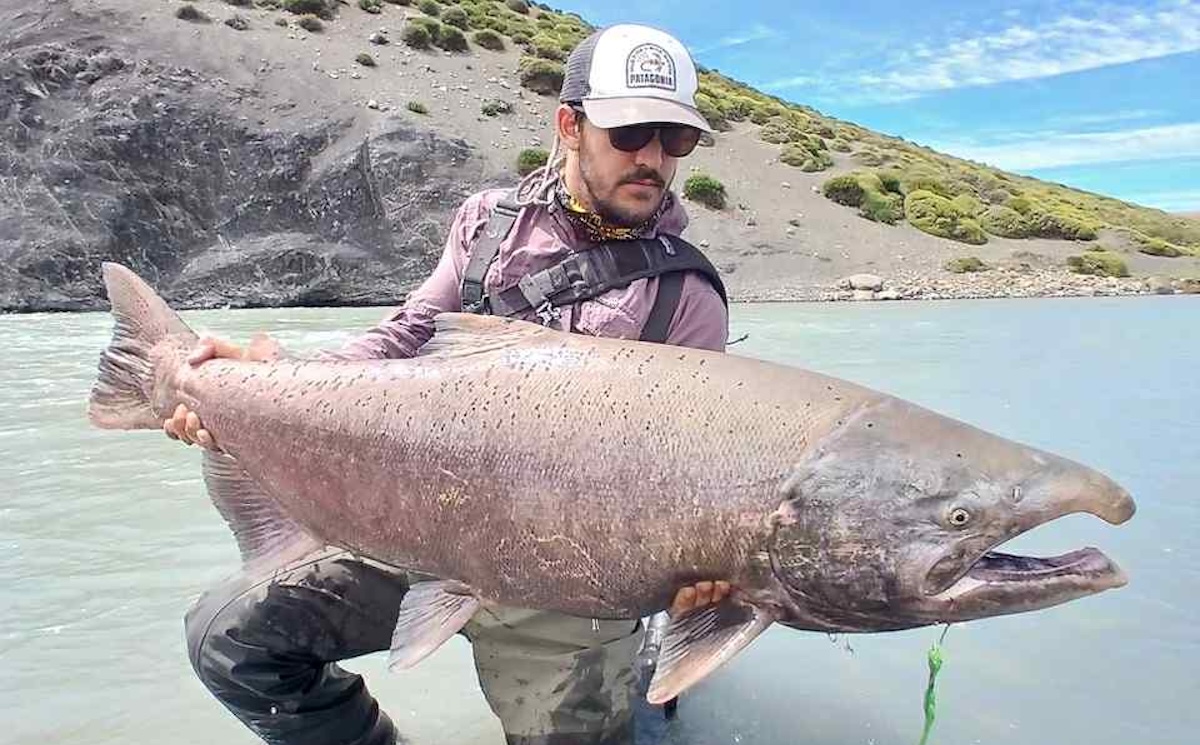
King Salmon
There’s a reason they’re called “King.” The largest salmonid in North America, chinook or king salmon can reach sizes of more than 5 feet long and weigh as much as 100 pounds. These powerful and gigantic fish are the top of the food chain for both the spin and fly anglers who pursue them. Hooking into a big king salmon is like tying your line to a runaway train and almost impossible to stop.
While the fish are now endangered in much of their native habitat along the West Coast, there are still healthy numbers of the fish in Oregon, Washington, and California, as well as transplanted populations in the Great Lakes. While rivers in Alaska, like the Kenai and Nushagak, are famed for their king salmon runs. However, some of the largest king salmon on earth currently reside outside of North America, in the wild rivers of Patagonia.
King salmon are the king of all salmonids due to their size,” says Juan Manuel Biott, owner of Tres Amigos Outfitters in South Patagonia. “The fish are the biggest and also colonize environments like no other. When they come back from the ocean and we start chasing them in fresh water, you realize that they swim fast, don’t feed anymore, and they are very alert to any threat, making them a true trophy.”
With king salmon being unable to eat when they return to rivers, anglers target them with large, gaudy lures that make the fish strike out of aggression. Or, they troll large spoons and jerkbaits in lakes and the ocean. However you hook them, once you tie in with a big king salmon, you’re in for a hell of a ride.
“When you hook a king salmon, you have a lot of chances to also lose it because of their strength,” Biott told MeatEater. “They’re one of the most powerful fish in the world, and they fight to the death. It makes them truly hard to catch and land!”
Many king salmon anglers become addicted to their pursuit, and some will even become completely obsessed making saving the fish of North America all the more important.
“Once you have a close encounter with a 40- or 50-plus-pound fish, it becomes a fever,” Juan said. “You’re fighting an ocean creature in a river, and that is always an adventure itself. It has so many variables that landing one makes you feel like you’re in heaven. We have seen fish over 90 pounds landed and have come very close to breaking the world record down here. Most of our clients and friends from the Northern hemisphere have said that the size of the fish down here has basically been lost in the north, and so while we have a great chance of breaking a world record are only down here, it’s sad to think that such a wonderful fish is disappearing from it’s traditional home.”
Dream Big
There’s a reason we all have great ambitions. They give us something to strive for, something to achieve, and even if we come up short, our biggest goals always present us with the biggest rewards.
When we target the largest fish in freshwater, we’re doing more than simply going fishing—we’re stepping up to a challenge that will take work to achieve. Big fish give us something to dream about, to plan for, and to test ourselves against. In short, big fish show us what we’re made of, so we do our best to never let them get away.
Read the full article here

